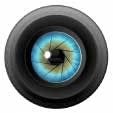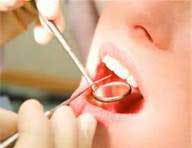Creating productive dental hygiene departments via the power of probing
Picture this: A new patient is seen on the doctor’s schedule and receives a comprehensive examination and radiographs. The patient is told "all is fine" (no restorative needs) and is scheduled with the hygienist for a “cleaning." At the hygiene appointment, a complete periodontal evaluation is performed which reveals early periodontal disease requiring periodontal therapy. The patient’s reaction very often is: "I was just in to see the dentist. He said "all was fine"....the dentist didn’t say I had periodontal disease.” If this sounds all too familiar, read on!
When a new patient is seen on the doctor’s schedule first, the periodontal evaluation is often omitted, with the emphasis on the patient’s restorative needs. Spot probing encourages misdiagnosis and creates an awkward situation for all members of the dental team. A breach in credibility is created when the patient is scheduled for an “adult prophy” and situations like the one described above unfolds. Six (6) point probing during the comprehensive examination ensures the patient is properly diagnosed and appropriately scheduled for treatment with the dental hygienist.
Break the Habit
A comprehensive periodontal evaluation is a detailed snapshot of a patient’s periodontal status and is essential for proper diagnosis and treatment planning. Here are some pointers regarding the periodontal evaluation:
1. Stop assuming the patient’s periodontal health.All adult patients require a periodontal evaluation in order to properly assess periodontal status. This begins at approximately 18 – 20 years old.
2. Do not cut corners! Always record six readings on each tooth. Spot probing encourages misdiagnosis.
3. Take the focus off “the numbers.” Comprehensive periodontal evaluations include more than just pocket depths. Be sure to record: bleeding, recession, tissue color, loss of stippling, wear facets, furcations, abfraction lesions, exudate, and clinical attachment levels.
4. Probe at least once a year. This guideline reinforces the importance of continual assessments in order to maintain periodontal health and intercept disease in the early stages.
5. Explain the importance of the screening. Keep the patient “in the loop" and explain what the numbers mean. This keeps the patient engaged and positively affects compliance with periodontal therapy case acceptance.
Probing fundamentals
A review of probing technique is helpful when launching a new periodontal evaluation protocol. The following guidelines were taken from Esther Wilkins “Clinical Practice of the Dental Hygienist”:
Technique
1. Use small-step circumferential measurements around each tooth
2. Record the deepest reading
3. Use exploratory strokes
4. Hold the probe with a light grasp
Adaptation
1. Tip of the probe stays under the gingiva
2. Keep probe parallel to the long axis of the tooth
Angulation
1. Angle of insertion--fifteen degrees--just enough to clear the height of contour at the crown
2. To detect furcations, increase angulation to forty-five degrees
3. Use a palatal approach when accessing mesial and distal furcations on the maxilla
It is highly recommended to standardize periodontal probes throughout the office. A probe that is comfortable for the patients as well as easy to read for clinicians helps tremendously in periodontal disease and diagnostics.
Power of Probing
Thorough periodontal evaluations are the standard of care and are also required for filing insurance claims for periodontal therapy and locally applied antimicrobial placement. Just as doctors expect to see current radiographs on the viewbox, the same is expected regarding the periodontal evaluation.
The “power of probing” has the greatest impact on building productive and self-propelling hygiene departments. Make a commitment to do this valuable assessment and watch your hygiene department soar to the next level!






